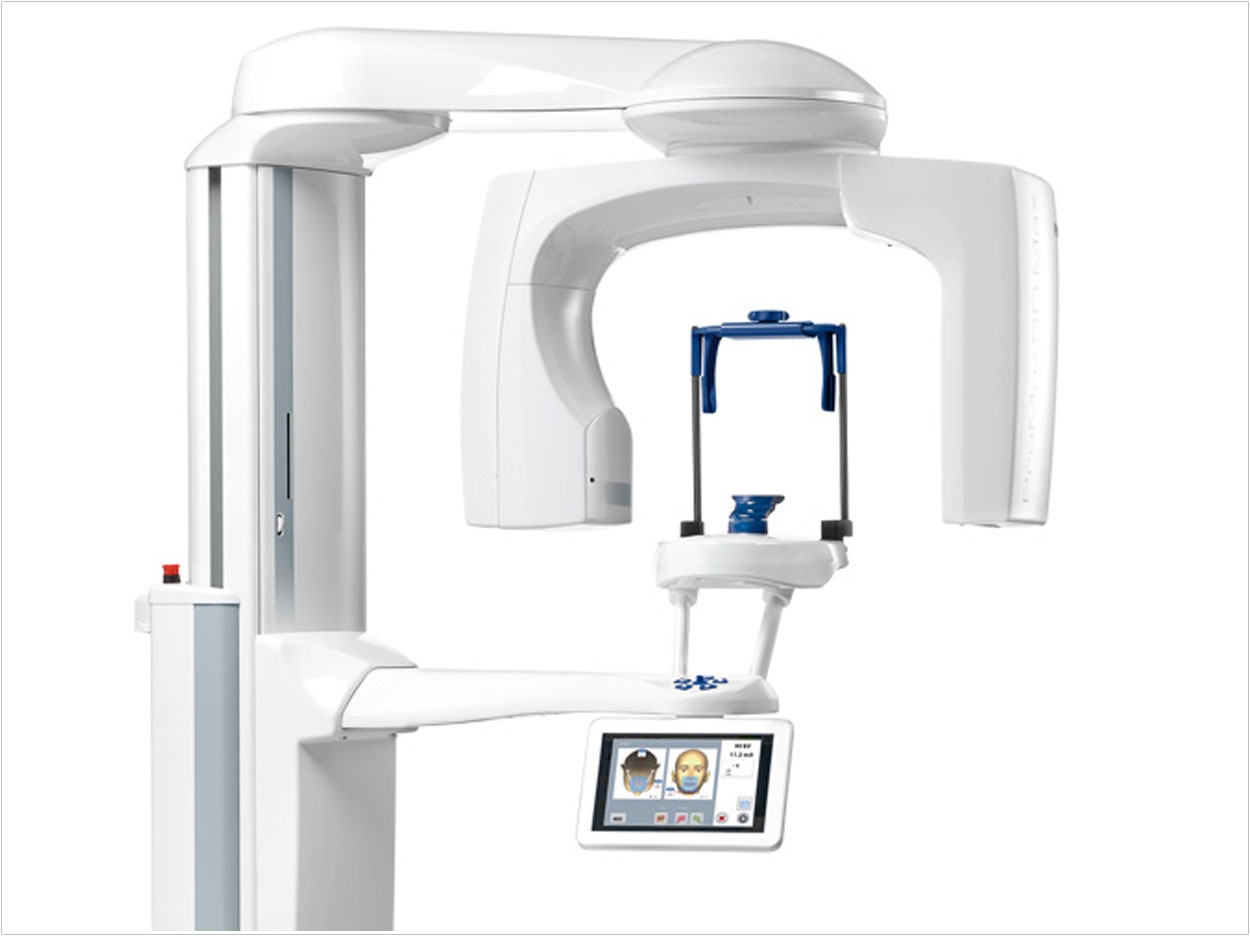 A new study performed by J.B. Ludlow and J. Koivisto has found that dentists can reduce the amount of patient radiation from Planmeca ProMax CBCT products without losing the diagnostic quality of images*. This research is published in the April issue of Journal of the International Association of Dental Research. Researchers from University Of North Carolina School Of Dentistry tested the imaging units to determine if reduced radiation exposure would result in a reduction in diagnostic quality of CBCT images taken. Dose values were noted using various combinations of field size and exposure parameters necessary for children and adult settings in typical orthodontic diagnostic practices using the Planmeca ProMax CBCT Ultra-Low Dose protocol. According to Planmeca, its ProMax units are designed to reduce patient radiation; this helps dentists comply with the ALARA principle of radiation exposure (also known as “As Low As Reasonably Achievable”) and the Image Gently campaign, which emphasizes the importance of imaging at a lower dose for pediatric patients. The study examined images taken using the ProMax’s CBCT Ultra-low Dose protocol with standard exposures. Images were taken at 24 locations in a 10-year old child phantom in addition to an adult phantom, with multiple exposures made for each imaging location. Dosimeters were read three times and dosimeter values were adjusted for sensitivity of dosimeters to affect kV or X-ray source. The study found that using the Ultra-Low Dose (ULD) protocol resulted in an average of 77% reduction in radiation exposure when compared with standard imaging protocols. The researchers also found that while the imaging methods reduced radiation exposure, they found no “statistical reduction in image quality between ULD and standard protocols, suggesting that patient doses can be reduced without loss of diagnostic quality.” “In my opinion, the ULD images acquired by the Planmeca ProMax in this study meet the standards of the ALARA radiation safety principle as well as the Image Gently campaign,” comments Dr. Jack Fisher, professor of dentistry and orthodontics at Vanderbilt University School of Dentistry. “Why would anyone take a 2D image with this amount of exposure when they can get a 3D image with excellent diagnostic quality at an ultra-low dose of radiation?” The study was supported, in part, by a grant from the NIDCR. *According to “Dosimetry of Orthodontic Diagnostic FOVs Using Low Dose CBCT Protocol.” For copies of this study, please contact Planmeca at (855) 245-2908.
A new study performed by J.B. Ludlow and J. Koivisto has found that dentists can reduce the amount of patient radiation from Planmeca ProMax CBCT products without losing the diagnostic quality of images*. This research is published in the April issue of Journal of the International Association of Dental Research. Researchers from University Of North Carolina School Of Dentistry tested the imaging units to determine if reduced radiation exposure would result in a reduction in diagnostic quality of CBCT images taken. Dose values were noted using various combinations of field size and exposure parameters necessary for children and adult settings in typical orthodontic diagnostic practices using the Planmeca ProMax CBCT Ultra-Low Dose protocol. According to Planmeca, its ProMax units are designed to reduce patient radiation; this helps dentists comply with the ALARA principle of radiation exposure (also known as “As Low As Reasonably Achievable”) and the Image Gently campaign, which emphasizes the importance of imaging at a lower dose for pediatric patients. The study examined images taken using the ProMax’s CBCT Ultra-low Dose protocol with standard exposures. Images were taken at 24 locations in a 10-year old child phantom in addition to an adult phantom, with multiple exposures made for each imaging location. Dosimeters were read three times and dosimeter values were adjusted for sensitivity of dosimeters to affect kV or X-ray source. The study found that using the Ultra-Low Dose (ULD) protocol resulted in an average of 77% reduction in radiation exposure when compared with standard imaging protocols. The researchers also found that while the imaging methods reduced radiation exposure, they found no “statistical reduction in image quality between ULD and standard protocols, suggesting that patient doses can be reduced without loss of diagnostic quality.” “In my opinion, the ULD images acquired by the Planmeca ProMax in this study meet the standards of the ALARA radiation safety principle as well as the Image Gently campaign,” comments Dr. Jack Fisher, professor of dentistry and orthodontics at Vanderbilt University School of Dentistry. “Why would anyone take a 2D image with this amount of exposure when they can get a 3D image with excellent diagnostic quality at an ultra-low dose of radiation?” The study was supported, in part, by a grant from the NIDCR. *According to “Dosimetry of Orthodontic Diagnostic FOVs Using Low Dose CBCT Protocol.” For copies of this study, please contact Planmeca at (855) 245-2908.
Industry News
Study finds Planmeca ProMax CBCT Ultra-Low Dose protocol reduces patient radiation exposure
Dentistry Today
April 24, 20151 Mins read3.5k Views

0
Shares
0
Shares











